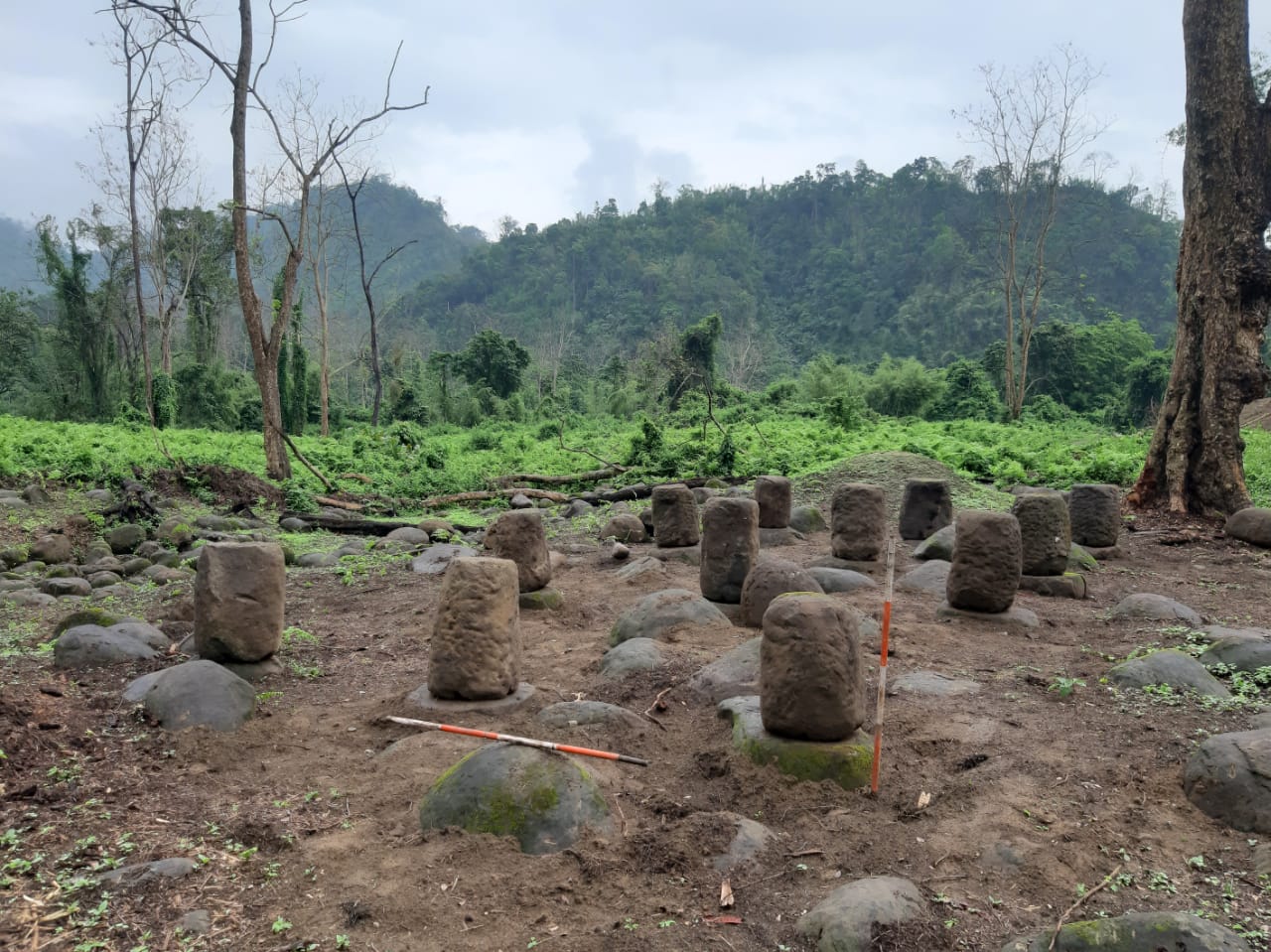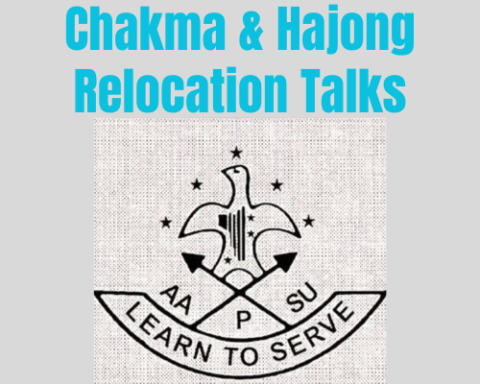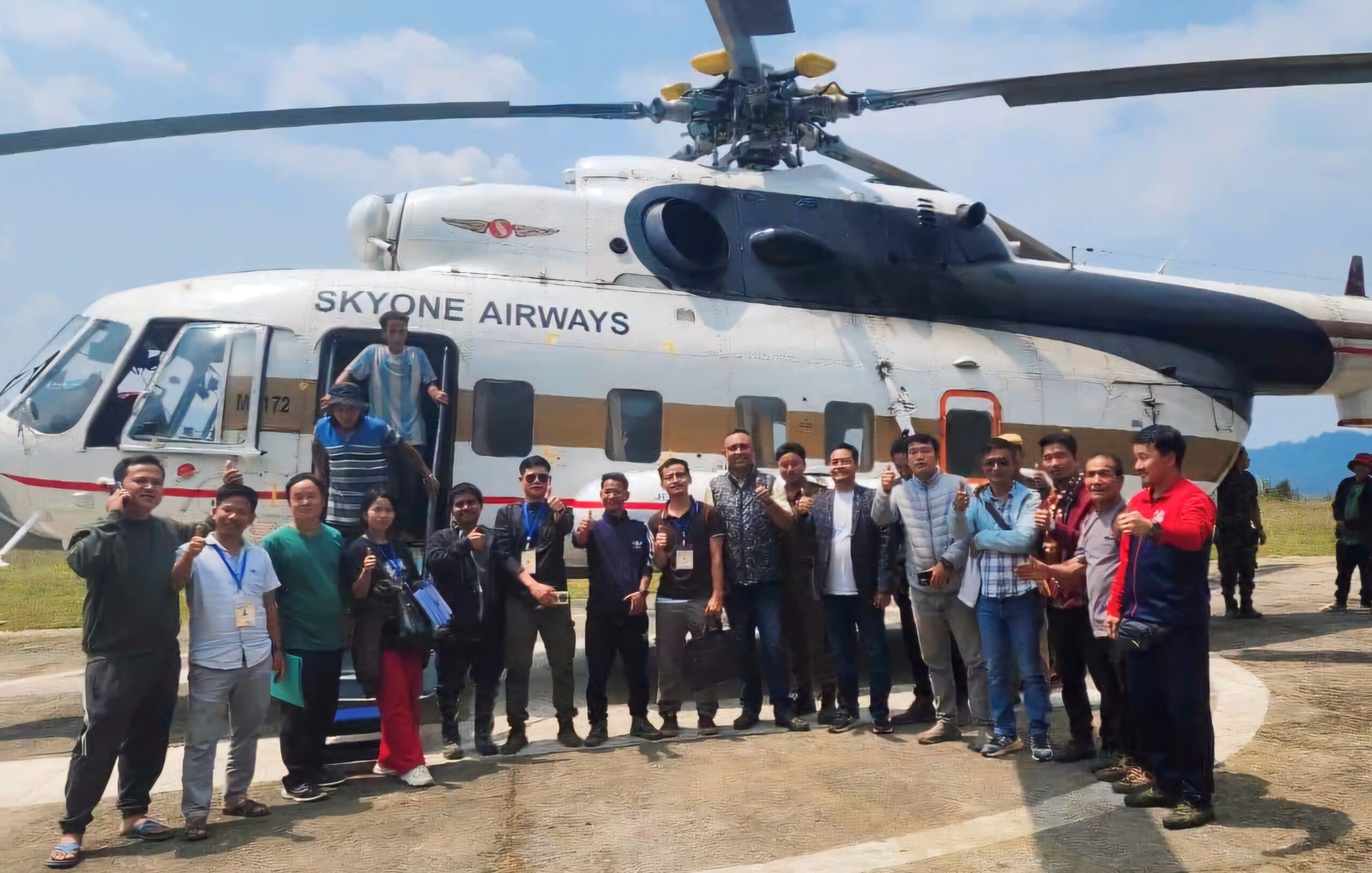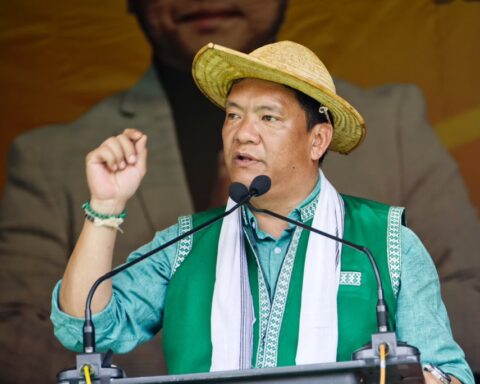Itanagar: The Archaeology Section of the Directorate of Research, Government of Arunachal Pradesh, has discovered the remains of an ancient settlement (covering an area of more than 20 acres) in the jungles of Ramghat under Tarasso circle in Papum Pare district.
The rare findings were unearthed during an exploration-cum-excavation work carried out by the archaeology team of the state research department led by archaeologist Pura Koji and assistant Tadu Ringku.
The archaeological excavation has led to the discovery of a fortification (rampart) measuring around 226 meters long and is made of stone blocks, burnt bricks and stone boulders.
The rampart also includes a gate (rectangular and hemispherical in shape) made of stone blocks, burnt bricks and stone slabs with a 2.83 meter high interior passage.
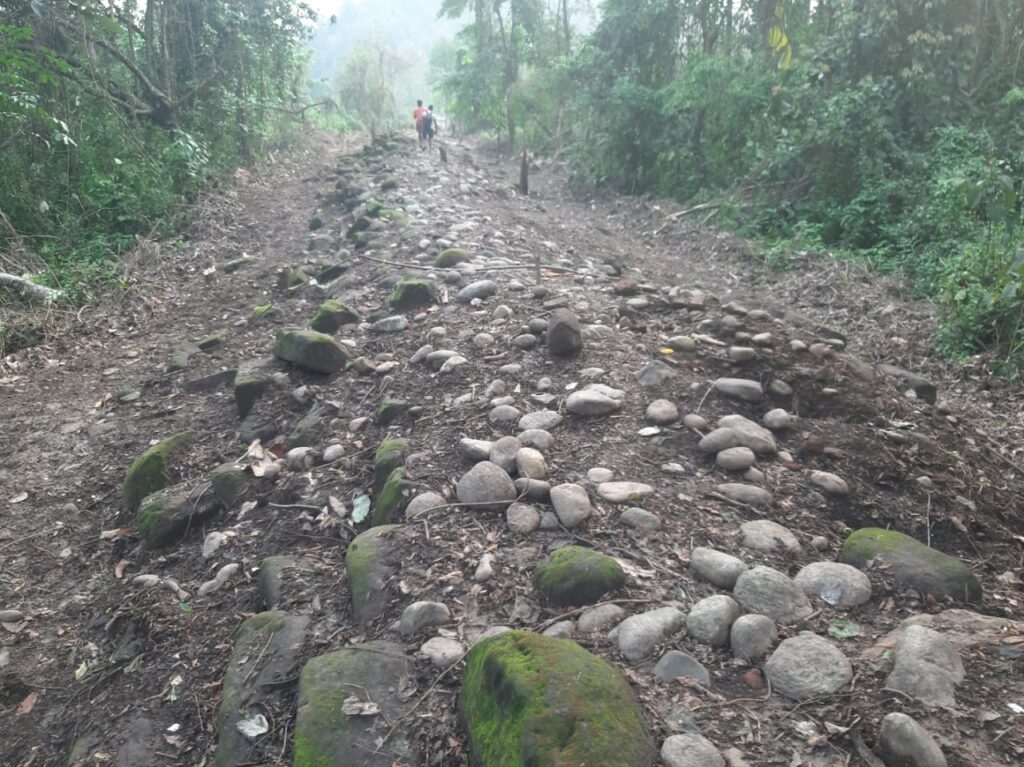
Officials said some of the stone blocks discovered in the exploration have symbols/designs like that of combined bows and arrows and tridents, while varied shaped and sized stone blocks and around 31 burnt bricks believed to have been used in the fortification have also been discovered in the area so far.
The findings also include a Shivalinga (broken), sealing ball and potsherds while the field investigation has also revealed ancient human habitation made of stone piles (pillars).
The stone piles which were discovered during the exploration and scientific debris clearance were partly conserved, officials said.
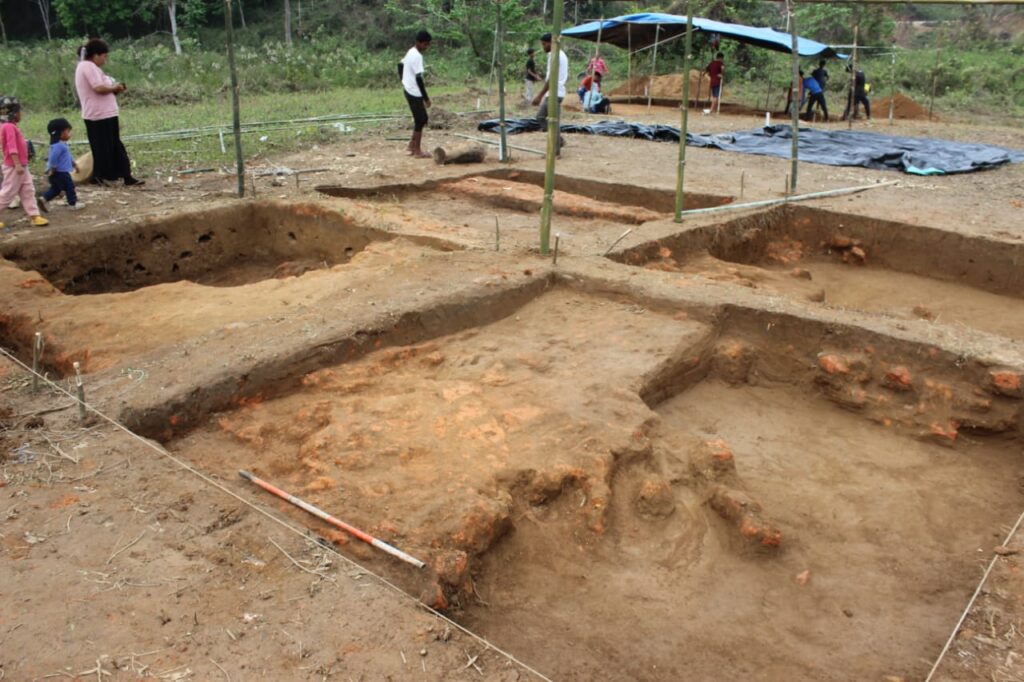
Meanwhile, an archaeological exploration was also carried out in and around the Vyas Kund area of Ramghat during which the remains of a stone staircase was discovered.
Informing that the archaeological exploration started on March 24 this year has led to such a large-scale finding, Koji said there is a need to carry out further intensive field work and investigation in the areas to unearth more ancient remains.
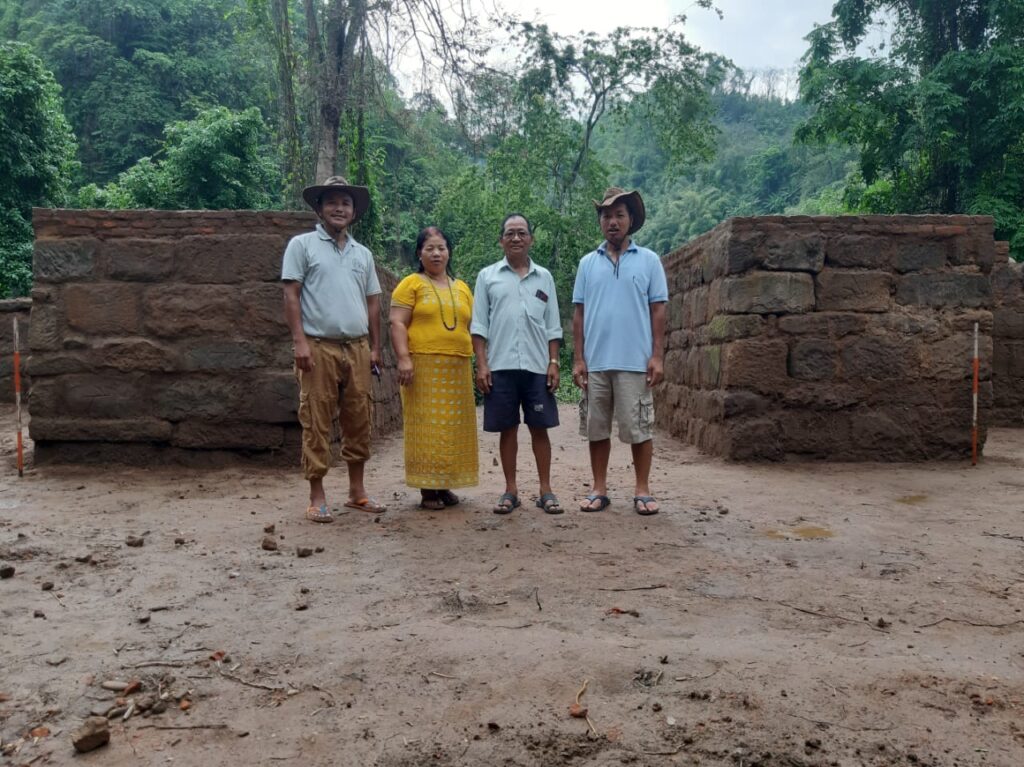
“We have also unearthed several brick structures, prehistoric tools and potsherds in the Upper Balijan area which seem to be the remains of an ancient settlement. There is also a footpath made of bricks that connects the structures and runs in an east to west direction and then towards the north,” he said.
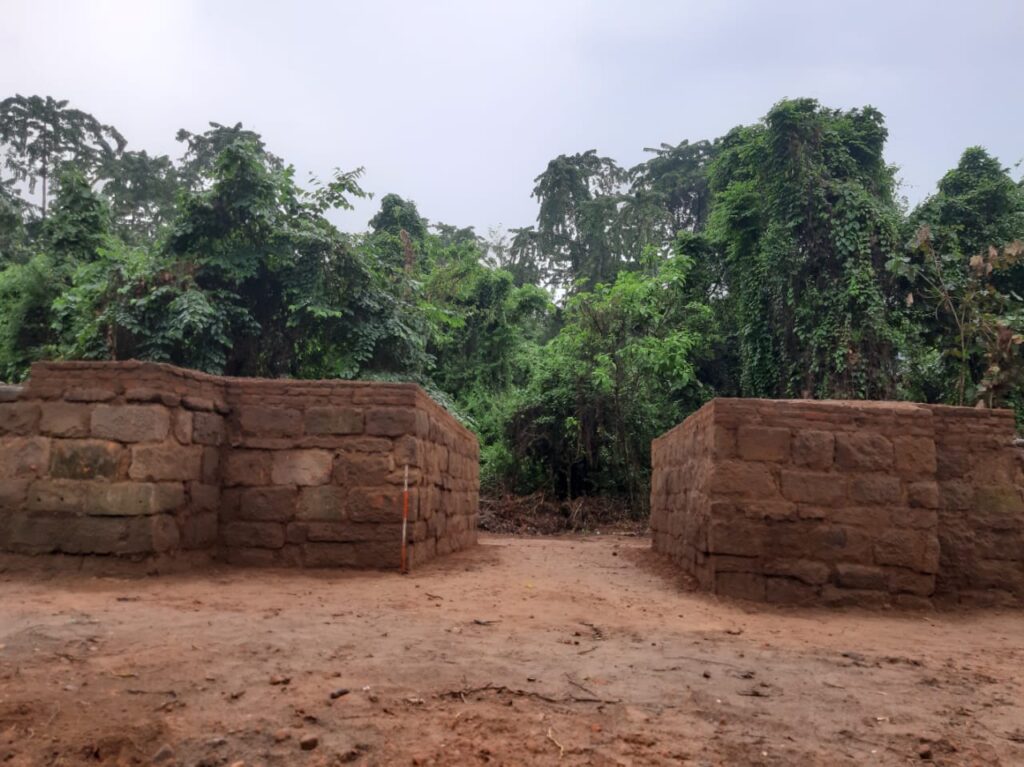
Koji thanked the local administration, the zilla parishad members of Balijan and Tarasso and the land owners and local youths for the support and cooperation extended by them during the exploration.

